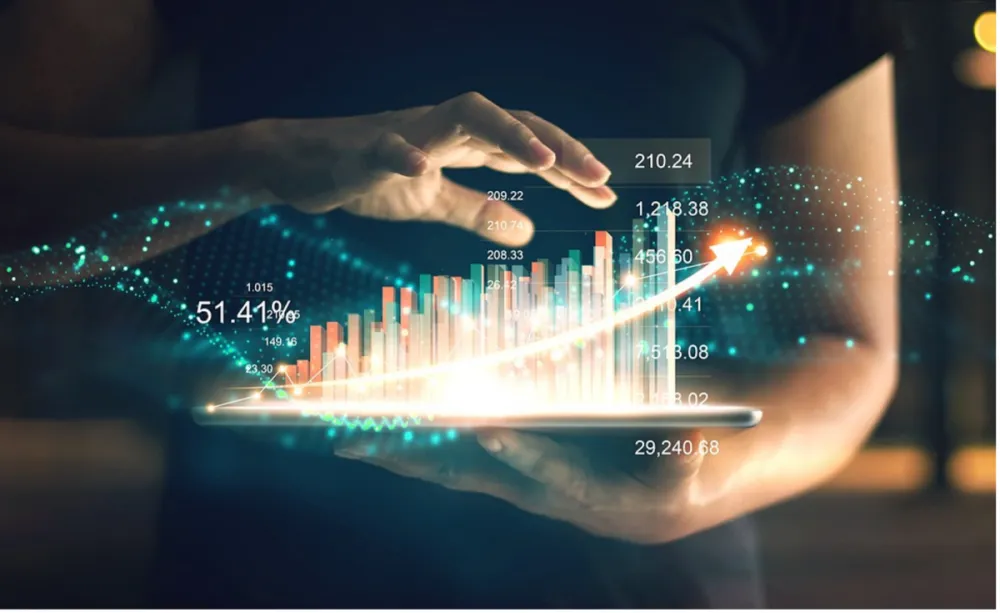Data analysis and data analytics: both are similar terms – It’s a big common misconception.
Some say “wah-ter” and some say “wooter,” but they can call the whole thing off because no matter what the pronunciation is, they are referring to the same thing. No real dispute here, it’s just the variation in pronunciation. But if people call those terms similar whose meanings are entirely different, that’s where the dispute starts. Data analysis and data analytics have a little similar pronunciation but that doesn’t imply they are the same terms.
Let’s start with putting things as rational as we can. Let us tell you the definitions of both terms.
Data analysis is a broader section of data analytics. The term data analysis itself elaborates that it includes the analysis and exploration of the data. While data analytics is a term for data management and it encompasses different trends and patterns of the data.
Data analytics can not change, assess and organize a data set in certain ways to better understand it. All this is done in the field of data analysis. Data analytics is simply a domain that comprises data management.
Data levels all arguments.
– Anthony W. Richardson
Data benefits the businesses at various levels and this is where it gets important to understand the difference between data analysis and data analytics.
While both of these terms help in transforming the raw data into actionable reasoning to provide business value. The major difference between both depends on their approach, as data analysis peeks towards the past while data analytics towards the future.
That’s a primary difference but let’s drill down a little deeper to make the terms clearer to you and fully comprehend both approaches and how these are beneficial for the corporations.
Data Analysis Vs. Data Analytics
According to Merriam Webster, analysis is the partition of whole data into small parts, and analytics is the science of reasonable analysis. Let’s start with the head-to-head comparison between both terms.
- Form
Data Analysis
Data analysis is a skilled or dedicated form of data analytics used in corporations to assess data and take some knowledge into it.
Data Analytics
Data analytics is the common or general form of analytics that is employed in corporations to formulate decisions from data that is data-driven.
- Structure
Data Analysis
Data analysis consists of analyzing data, examining, cleaning, revamping the data to give a significant result.
Data Analytics
Data analytics generally consist of data compilation and scrutiny and it has one or more users.
- Tools
Data Analysis
Data analysis uses OpenRefine, KNIME, RapidMiner, Google Fusion Tables, Tableau Public, NodeXL, WolframAlpha tools to analyze data.
Data Analytics
Data analytics uses various analytics tools in a market but generally, it employs R, Tableau Public, Python, SAS, Apache Spark, and Excel.
- Sequence
Data analysis
Data analysis follows the sequence like this: data compilation, data scrubbing, analysis of data, and analyzing the data precisely so that you can comprehend what your data is indicating.
Data analytics
Data analytics’ life cycle follows the sequence like this: learning the criteria of sorting out the data, gathering data, sorting of it, and lastly cleaning it.
All these steps are taken in data analytics.
- Usage
Data Analysis
Data analysis can be employed in numerous ways like one can analyze descriptive analysis, exploratory analysis, inferential analysis, predictive analysis, and seize valuable insights from the data.
Data Analytics
Data Analytics, in general, can be employed to find disguised patterns, unidentified correlations, customer priorities, market trends, and other essential information that can assist to make more notified judgments for business objectives.
- Example
Data Analysis
Let’s suppose you have 1GB client purchase-related data of the past 1 year and you are attempting to find out what went on so far that implies in data analysis we look into the past.
Data Analytics
Let suppose you have 1 GB of customer purchase-related data of the past 1 year, now one has to disclose what our customer’s next probable purchases can be, you will employ data analytics for that. That implies in analytics, we look into the future.
Detailed outlook of Data Analysis and Data analytics
To find signals in data, we must learn to reduce the noise – not just the noise that resides in the data, but also the noise that resides in us. It is nearly impossible for noisy minds to perceive anything but noise in data.
-Stephan Few
Data Analysis
We use analysis to explain how or why something happened.
Data analysis is one slice of the data analytics pie. Data analysis comprises cleaning, transforming, modeling, and interviewing data to find valuable knowledge.
The process of data analysis is usually restricted to a sole, already qualified dataset. You’ll evaluate, arrange, and quiz the data. Today, in 2021, software or “machine” usually performs the first session of analysis, often present in one of your databases or equipment. But this is reinforced by a human who analyzes and asks the data with extra context.
When you’re done evaluating a dataset, you’ll veer around to other data analytics trainings to:
- Give others permit to the data
- Illustrate the data (ideally with data visualization or storytelling)
- Imply actions to take based on the data
Types of data analysis
There are many types of data analysis strategies. Here are the most well-known:
- Text analysis: it’s referred to as Data Mining. This strategy finds out a pattern in huge form data sets employing databases or other data mining tools.
- Statistical analysis: this analysis reacts to “What happened?” by employing past data in the dashboard structure. Statistical analysis encompasses the collection, analysis, interpretation, presentation, and modeling of data.
- Diagnostic analysis: this analysis replies “Why did it happen?” by pursuing the reason from the knowledge discovered during statistical analysis. This type of analysis is effective for identifying behavior patterns of data.
- Predictive analysis: this analysis implies what is likely to occur by utilizing prior data. The predictive analysis gives rise to predictions about future results based on the data.
- Prescriptive analysis: this type of analysis integrates the insights from text, statistical, diagnostic, and predictive analysis to deduce the action(s) to put up with solving an existing problem or impact a judgment.
Highly Recommended Article: Is Data Analysis Quantitative or Qualitative?
Data Analytics
We use analytics to explore potential futures.
Data analytics encompasses all the steps you take, both human- and machine-enabled, to find out, analyze, visualize, and confide the tale of structures in your data to steer business strategy and consequences.
A winning data analytics practice can and should provide a promising strategy for where your industry can go. When performed well, data analytics can assist you:
- Discover trends
- Excavate chances
- Foresee actions, catalysts, or events
- Render decisions
Ways in which data analytics can benefit businesses
There are several ways in which data analytics can open opportunities for businesses:
- Utilizing validities, not guesses, to comprehend how your consumers engage might imply you transform your sales or marketing procedures. A bakery might employ its data to know its demand for bread bowls boosts in the winter—which implies you don’t want to deduct the prices when the need is high.
- A gain in cyberattacks might mean you require to take proactive preventive gauges.
- Data from a variation of IoT devices in a specific environment, such as your server room, a power station, or a warehouse, could predict whether you’re contributing the safety and dependability you need at the least cost possible.
Processes in data analytics
The data analytics activity comprises many distinct processes, which can include a data pipeline:
- Compiling and consuming the data
- Classifying the data into structured/unstructured forms, which might also interpret the next actions
- Organizing the data, usually in databases, data lakes, and/or data warehouses
- Stocking the data in the hot, warm, or cold repository
- Conducting ETL (extract, transform, load)
- Assessing the data to take out patterns, trends, and insights
- Transmitting the data to business users or customers, often in a dashboard or via particular storage
Highly Recommended Articles:
Is it Possible to be a Data Analyst with no coding skills?
5 Reasons Why Data Analytics is Important for Problem Solving
Data Analytics vs. Data Analysis -Which is better?
Brack Nelson, Marketing Manager at Incrementors SEO Services, indicates that the result of data analytics is more encompassing and effective than the output of data analysis independently.
Consider the differences between:
- An analyst sending a business using a spreadsheet of figures versus building a dashboard for the user to interact with explanatory analytics.
- A business user obtains a report with the live importance of a marketing campaign versus building a web app that both exhibits the forecast and allows the user to interact with predictive analytics.
The ultimate move, Brack says, is building a commodity that gives rise to a data-driven vision and contacts another system’s API to generate action—that’s data analytics in litigation.
Why people confuse data analytics and data analysis?
The terms are occasionally confused by data scientists and data analysts themselves!
Researching a diversity of people in the wide world of data publicized this divide. Most conceded that data analytics is the vaster field, of which data analysis is one key process, but others had various takes.
This scarcity of transparency emphasizes that maybe the problem isn’t data analytics versus data analysis—but whether you’re performing both as adequately as you can.
Numerous people said that they aren’t apprehensive if we non-data professionals use the terms interchangeably. So, if you confuse data analytics with analysis at your next discussion, many folks will be none the wiser.
Understanding both terms via example
Data is the new currency, and it’s the medium of exchange between consumers and marketers.
-Lisa Utzschneider
Let’s consider “data analysis” in light of our dictionary’s definition. For a “detailed examination” of data to carry on, that data must already prevail. And since it already prevails, the data must correlate to something that transpired in the past. As such, what data analysis performs is to answer the question, “What happened?”
For instance, a baking shop owner may evaluate the number of sales he made of his menu last year and which one thing was the top seller in the specific months or weeks. This is the in-depth survey or we can say data analysis of his sales.
Hence, what is the definition of data analytics? According to the dictionary’s definition, analytics is “systematic computational analysis” which includes the word “analysis”, but starts with a significant term “systematic computational”.
Breaking it down, what we understood is no doubt data analytics schemes do certainly evaluate data to discover what went on in the past but these schemes are more worried about conducting reasonable, standardized, and inferable reasoning to provide awareness for how to operate in the future. In IT Glossary, Gartner has its definition of “analytics”, that is:
“Increasingly, ‘analytics’ is used to describe statistical and mathematical data analysis that clusters, segments, scores and predicts what scenarios are most likely to happen.”
So, let’s get back to our baking shop owner. Here, data analytics users would incorporate the results from the investigations of last year’s sales data with “systematic computational” reasoning.
In the process, this implies they will utilize advanced machine learning equipment and algorithms to get on beyond the historical review and anticipate or indicate future sales structures. In this way, with data analytics, the baking shop owner can make conscious decisions on when is the best time to undertake new lines of baking such as brownies, pastries, etc. over the coming weeks and months.
While of course data analysis may often be adequate in specific decision-making strategies, the broader and more extensive discipline of data analytics powers the next stage of decision making – the capacity to be predictive and prescriptive.
Before we close the article, I’d like to recommend three interesting posts that I am sure you’ll find valuable. Open them in a new tab, and read later.
-
The Role of Data Analytics at The Senior Management Level

From small and medium-sized businesses to Fortune 500 conglomerates, the success of a modern business is now increasingly tied to how the company implements its data infrastructure and data-based decision-making. According
-
The Decision-Making Model Explained (In Plain Terms)

Any form of the systematic decision-making process is better enhanced with data. But making sense of big data or even small data analysis when venturing into a decision-making process might
-
13 Reasons Why Data Is Important in Decision Making

Data is important in decision making process, and that is the new golden rule in the business world. Businesses are always trying to find the balance of cutting costs while
The Bottom Line
“Data is a precious thing and will last longer than the systems themselves.”
– Tim Berners-Lee
At this age, data usage is promptly heightening and a vast amount of data is compiled across institutions. Data can pertain to consumers, business purpose, applications users, visitors related and stakeholders, etc. This data is stirred and allocated to find, comprehend and examine structures.
Data analysis is useful when conducting experimental analysis and generates some insights from data utilizing cleaning, transforming, modeling, and visualizing the data and generating outcomes.
Data analytics refers to several tools and skills implicating qualitative and quantitative techniques, which employ this compiled data and generate a consequence that is utilized to enhance efficiency, productivity, lessen risk and increase business gain. Data analytics strategies differ from institution to institution according to their demands. That is.
Other Interesting Questions
What is the objective of data analysis?
The procedure of data analysis employs analytical and reasonable reasoning to attain knowledge from the data. The main objective of data analysis is to uncover the connotation in data so that the derived information can be employed to give rise to conscious decisions.
What are data analysis tools?
Data analysis tools are distinguished as a series of charts, maps, and diagrams formulated to compile, comprehend, and illustrate data for a broad range of applications and industries.
What are data analytics used for?
Data analytics assists people and institutions in understanding data. Data analysts generally evaluate raw data for intuitions and fads. They employ several tools and procedures to assist institutions to make decisions and win.
References
- https://www.educba.com/data-analytics-vs-data-analysis/
- https://www.goodreads.com/quotes/tag/data-analysis
- https://bestlifeonline.com/different-pronunciations/
- https://www.bmc.com/blogs/data-analytics-vs-data-analysis/
- https://www.google.com.pk/amp/s/www.jigsawacademy.com/blogs/business-analytics/analysis-vs-analytics/

